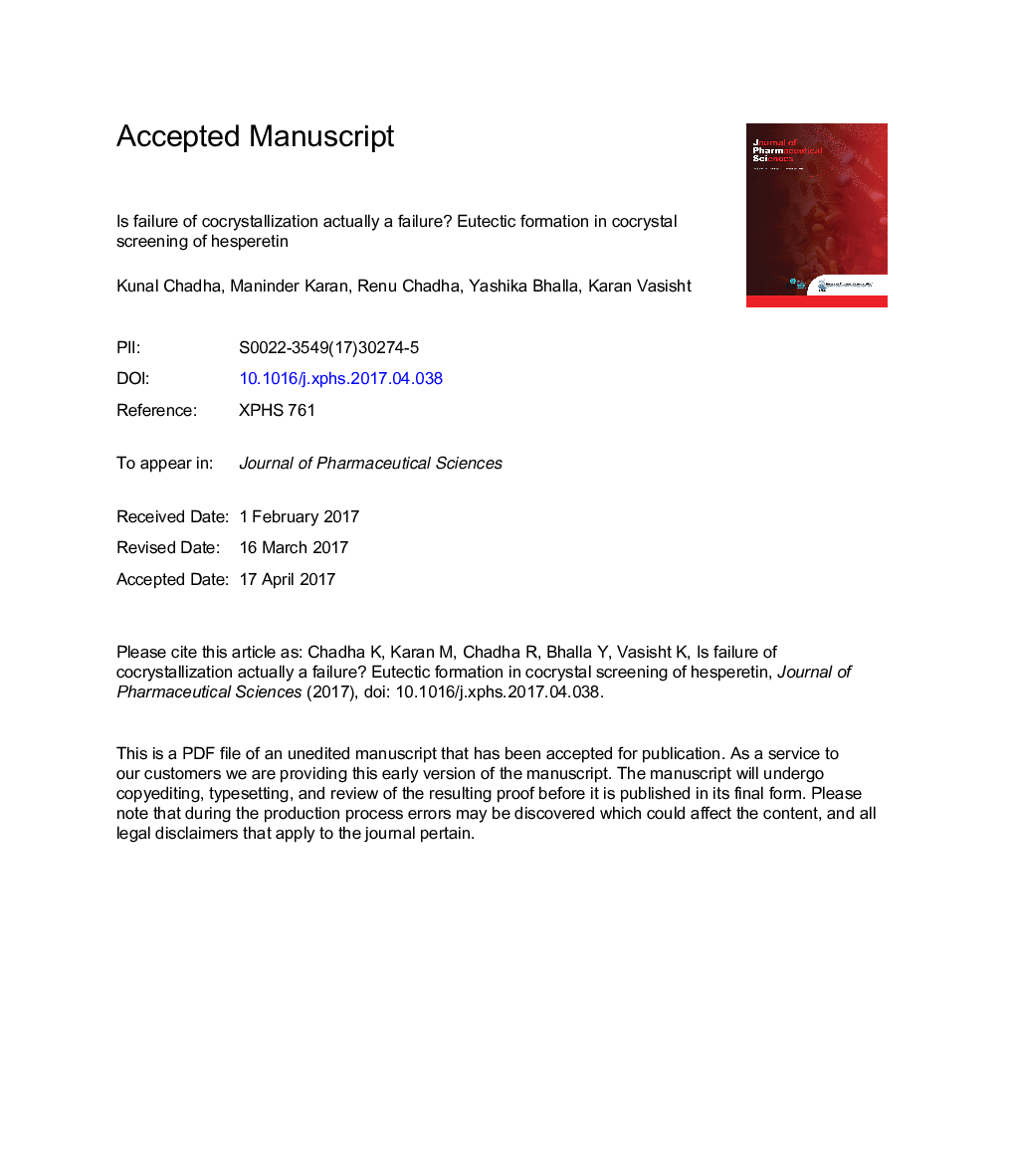| Article ID | Journal | Published Year | Pages | File Type |
|---|---|---|---|---|
| 8513928 | Journal of Pharmaceutical Sciences | 2017 | 26 Pages |
Abstract
Cocrystal screening of hesperetin with certain countermolecules generated highly soluble noncovalent derivatives in the form of eutectics, instead of expected cocrystals. As adhesive forces established by complimentary functional groups on hesperetin and coformers were unable to overcome the stress due to size shape mismatch of component molecules, thus, eutectics were formed. Hesperetin, a polyphenolic antioxidant with potent anticancer and cardioprotective effects, has an underdeveloped role in modern therapeutics on account of its critically low aqueous solubility resulting in stunted bioavailability. The liquid-assisted cogrinding of hesperetin and coformers generated binary-phase eutectics in fixed stoichiometry with theophylline (1:1.5), adenine (2:1), gallic acid (1.5:1), and theobromine (2:1). Primarily characterized by lower melting endotherm in differential scanning calorimetry, the eutectics showed complete melting in hot-stage microscopy. Apart from characteristic V-shaped binary-phase diagram, no discernible changes in the FTIR and powder X-ray diffraction spectra further confirm eutectic formation. The morphological differences were analyzed by SEM measurements. A 2 to 4 times enhanced dissolution profile of the eutectics measured in pH 7.4 aqueous buffer was coupled with the in vitro (1,1-diphenyl-2-picryl hydroxyl free radical antioxidant assay and RBC antihemolytic assay) studies to present a complete preliminary data on the improved bioavailability of hesperetin eutectics.
Keywords
Related Topics
Health Sciences
Pharmacology, Toxicology and Pharmaceutical Science
Drug Discovery
Authors
Kunal Chadha, Maninder Karan, Renu Chadha, Yashika Bhalla, Karan Vasisht,
